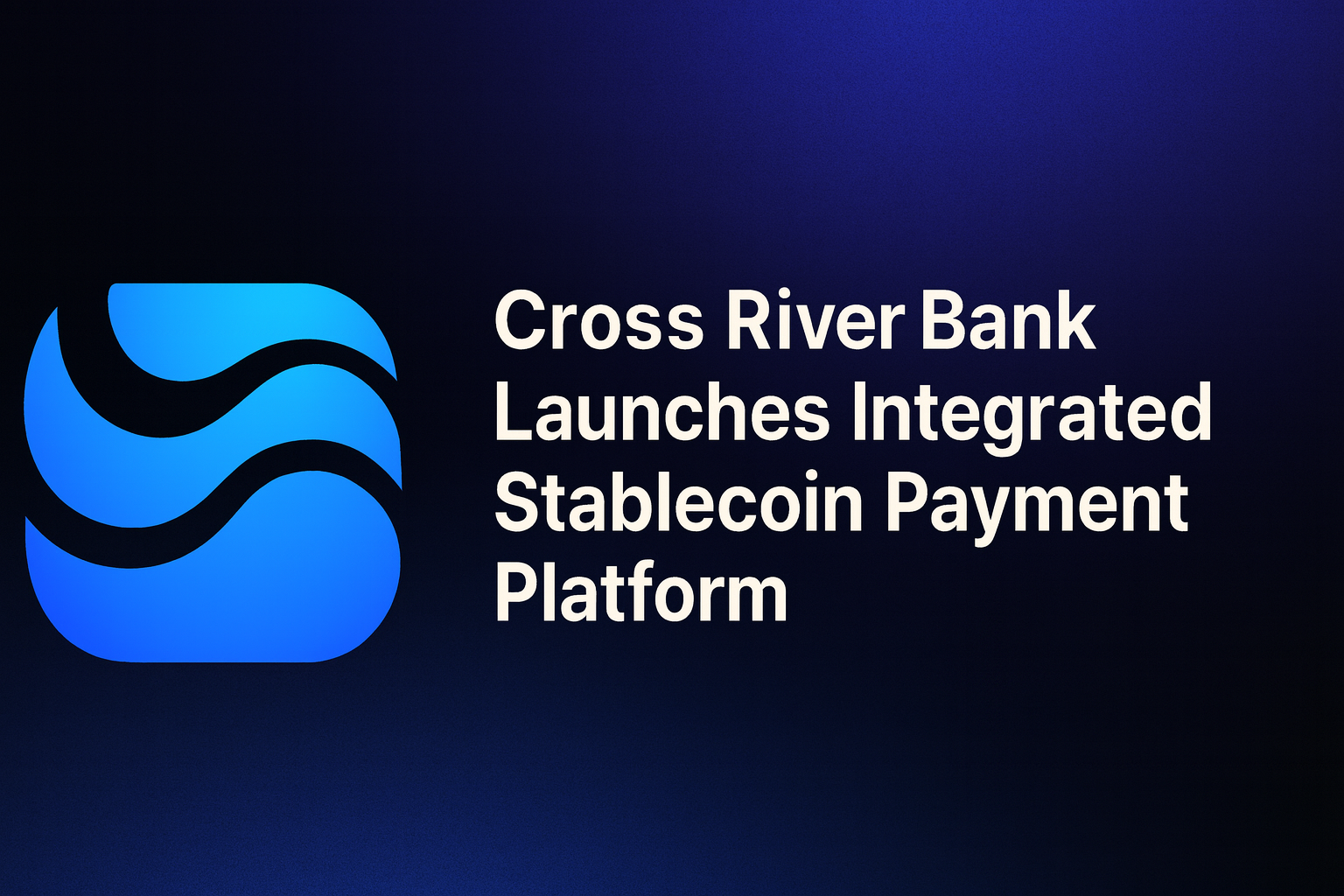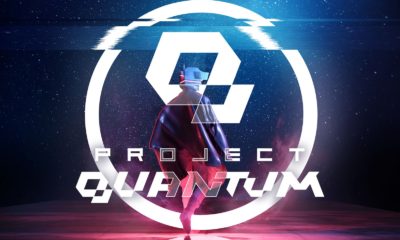Uncategorized
Top 4 Most Popular Crypto Presales in 2025: Cold Wallet, Snorter, Best Wallet & Subbd Deliver Real Utility

There are countless presale projects in the market, but only a few offer real tools and working platforms before listing. Many are still concepts or MVPs, while others already show real-world usage and reward users in the process. The strongest options give more than just a low entry, they prove value from the start.
This list filters out the noise and focuses on what matters: utility and return. These four projects are leading because they combine real-world application, strong mechanics, and generous presale pricing. Whether you’re a Web3 builder, crypto holder, or just exploring early movers, these are the most popular crypto options to keep on your radar.
1. Cold Wallet: Cashback Rewards and Real-Time Usage
Cold Wallet is one of the rare presales that already delivers what it promises. This self-custody wallet lets users earn cashback in $CWT every time they perform crypto activities like paying gas, swapping, or bridging assets. There’s no staking needed. The more $CWT you hold, the higher your cashback rewards, up to 100% for gas and 50% for swaps. Currently, rewards are paid in USDT. Post-launch, the Cold Wallet system will switch fully to CWT.
What makes Cold Wallet ($CWT) stand out among the most popular crypto options is its structure. It’s already active, already paying out, and the presale is only at Stage 17. Each coin is priced at $0.00998, with a confirmed launch price of $0.3517, pointing to a 3,600% ROI potential. So far, over 691.3 million coins have been sold and $5.7 million raised.
With 40% of the supply reserved for the presale and 25% for user rewards, the mechanics clearly favor early adopters. There’s also a referral setup where users earn 20% in $CWT for referrals and the referred get 10%. Cold Wallet isn’t asking for trust, it’s already rewarding users now, making it the most popular crypto presale for utility-focused users.
2. Snorter: On-Chain AI Betting for the Web3 Era
Snorter merges AI with on-chain betting in a way few platforms have done. With Snorter, users don’t just bet, they can follow strategies generated by AI or build their own models. Each transaction and bet is stored on-chain, so there’s no guesswork or hidden odds. Users can view and learn from every outcome.
Currently in Stage 3, Snorter’s presale price sits at $0.017, starting from $0.012. Its confirmed listing price is $0.18, giving over 10x headroom for early entries. What puts Snorter on the list of most popular crypto presales is its feature-rich approach. Beyond betting, the $SNRT token powers access to strategy tools, governance votes, and a prediction marketplace.
With over 17,000 users signed up for beta and a testnet already running, this project is delivering more than just promises. And with AI models potentially being licensed in the future, Snorter is one of the most forward-thinking crypto launches this cycle.
3. Best Wallet: Builder-Friendly Interface With Passive Rewards
Best Wallet is targeting a segment few others are focusing on; developers. It provides a wallet that goes beyond basic functionality. Builders can deploy test contracts, create dApps using drag-and-drop tools, and access testnet environments, all within the app.
Meanwhile, regular users earn $BEST by using features like bridging, swapping, or testing dApps. In presale Stage 8, Best Wallet offers coins at $0.009 with a confirmed listing price of $0.185, signaling a 20x opportunity. With features for both builders and users, it’s one of the most popular crypto options right now for hands-on engagement.
Non-token perks like free testnet credits and dApp revenue share also set it apart. Best Wallet isn’t about speculation, it’s about offering tools that make building in Web3 easier and rewarding both sides of the user base.
4. Subbd: Monetization Tools for Web3 Creators and Communities
Subbd solves a real issue: how to monetize community access in crypto. It gives DAOs, creators, and NFT projects the ability to create tiered subscriptions and recurring payments through the $SUBBD token. Think of it like Patreon, but designed for crypto with full on-chain contracts.
Now in Stage 6, Subbd is priced at $0.009, up from a $0.005 starting point. Its confirmed launch price is $0.085, with nearly 9x growth potential. What makes it one of the most popular crypto presales is its focus on niche needs with real tools.
Upcoming integrations with Snapshot and Guild also suggest it’s building serious infrastructure. On top of that, $SUBBD holders get discounts, rev-share, and governance rights. Subbd is for communities who want to build without relying on centralized platforms, and it’s gaining traction fast.
Presales That Deliver More Than Hype
The crypto scene is packed with presales, but only a few go beyond ideas. Cold Wallet stands out for rewarding usage before launch. Snorter gives bettors and AI fans a working testnet and real strategy tools. Best Wallet supports developers from day one, and Subbd enables better monetization for creators.
Each project brings a unique value layer to users. They’re priced low, offer real features, and are already in motion, not future plans on a roadmap. If you’re looking for the most popular crypto presales that deliver value early, this list offers four strong picks that are already making a difference.
Crypto Currency
Ethereum’s Biggest Month Yet: 29 Launches Mark Rapid Expansion of the Ecosystem

Ethereum has just completed one of the most active months in its history, delivering 29 launches, upgrades, policy shifts, and ecosystem milestones. The surge began with the Fusaka upgrade on December 3, introducing 13 new Ethereum Improvement Proposals (EIPs) that improved blob capacity, enhanced user experience, and activated data-availability sampling. With these updates now live, Ethereum’s roadmap toward more efficient Layer-1 scaling looks more achievable than ever.
The Fusaka upgrade set the tone for a month driven by rapid technical improvements and ecosystem expansion. Aave introduced its redesigned Aave App, offering a cleaner interface and simpler access to DeFi. Meanwhile, Devconnect Buenos Aires became Ethereum’s largest event to date, drawing over 20,000 attendees and hosting more than 75 project demos—many participants described it as Ethereum’s first true “World’s Fair.”
Real-world finance continued to integrate with Ethereum as Amundi, Europe’s largest asset manager, launched the first tokenized share class of a euro-denominated money market fund directly onchain. Disney also entered the Ethereum ecosystem via Cryptoys on Abstract, bringing globally recognized IP into Ethereum’s digital economy. Institutional interest climbed further when JPMorgan’s USD deposit token, JPMD, went live on Base, signaling a broader shift toward settling traditional finance transactions on public blockchain infrastructure. The AI-focused Eliza EcoFund also migrated its ELIZAOS token to Ethereum, naming it the preferred base layer for AI-agent development. The Ethereum Foundation later confirmed Mumbai as the host city for Devcon 2026, expanding its engagement in India’s fast-growing developer landscape.
Regulatory coordination strengthened with the creation of the Ethereum Protocol Advocacy Alliance, combining leading protocols—including Aave, Aragon, Curve, Lido, Spark, The Graph, and Uniswap—under a unified mission to defend Ethereum’s neutrality and promote permissionless innovation worldwide.
Rollup and privacy technology also made major strides. Starknet activated S-two, a high-speed prover securing every block, reinforcing its role in Ethereum’s ZK-rollup future. Aztec introduced Ignition, a decentralized Layer-2 consensus system enabling private, programmable onchain activity. The Ethereum Foundation also announced the Ethereum Interop Layer, a new initiative that aims to make Ethereum’s multi-rollup environment feel like a unified chain.
Stablecoin innovation accelerated as USX Capital deployed a privacy-preserving stablecoin on Scroll and LayerZero, enabling gasless private transfers. Aplus launched an issuance framework allowing smaller banks to offer GENIUS-compliant stablecoins. Nillion expanded its Blind Computer technology to Ethereum, unlocking decentralized computation without exposing user data.
Consumer adoption also accelerated across emerging markets. The Startale App for Soneium gained traction, supporting over 10 million weekly transactions. Argentina saw the introduction of wARS, a peso-pegged stablecoin available on Ethereum, Base, and World Chain. Liquidity and trading infrastructure improved as 1inch launched Aqua for liquidity defragmentation, and Renegade went live on Arbitrum with privacy-first, MEV-resistant trading. Tokenization gained momentum when Robinhood’s EU division tokenized nearly 1,000 stocks on Arbitrum for onchain settlement. Japan’s largest idol and fashion festival also moved onchain using the IRC App, powered by Record Protocol on Soneium.
Ethereum’s broader scaling ecosystem reached new highs this month, surpassing 34,000 transactions per second through rollup activity—its highest throughput ever recorded. The network also expanded user-facing infrastructure with multiple tools designed to increase safety, transparency, and usability, including social-driven activity apps, MEV-protected RPC endpoints, enhanced naming services, developer analytics platforms, and new fair-launch mechanisms.
Altogether, these developments illustrate a network accelerating on every front—scalability, institutional adoption, cultural integration, AI, tokenization, and global financial infrastructure. Ethereum’s record month signals a clear shift toward its next major era of growth.
Blockchain
Cross River Bank Launches Integrated Stablecoin Payment Platform

Cross River Bank has launched a stablecoin payment infrastructure integrated directly into its core banking system, marking a major milestone for blockchain-powered finance in 2025. Led by CEO Gilles Gade, the initiative enhances interoperability between fiat banking rails and blockchain networks while ensuring compliance and enterprise-grade security.
This upgrade bridges the gap between stablecoins and traditional banking, offering businesses a faster settlement environment and stimulating market interest through improved payment efficiency and regulatory alignment.
Cross River Bank’s new platform enables seamless interaction between stablecoin transactions and traditional accounts. By embedding the technology into its core system, the bank removes friction typically associated with blockchain payments, creating a unified and compliant framework for real-time transactions. CEO Gilles Gade emphasized the significance of this shift, stating, “We’re building the future of finance… reimagining every corner of banking—from BaaS to lending—to deliver a faster, more connected financial world grounded in safety and trust.” The platform, developed under the leadership of Luca Cosentino, strengthens financial networks through automation, transparency, and speed.
The launch is expected to accelerate stablecoin adoption across business payments and treasury operations. Enterprises seeking secure, blockchain-based financial tools now gain access to a regulated platform capable of handling real-time settlements without compromising compliance. This positions Cross River as one of the first banks to deliver a stablecoin-integrated environment for fintechs, payment processors, and corporate clients.
Industry analysts view this as a pioneering shift. Previous attempts at stablecoin integration often relied on external platforms or fragmented systems. Cross River’s unified ledger approach resolves these issues by offering interoperability, strict compliance, and direct banking support. The move could reshape how enterprises interact with digital assets, enhancing operational efficiency as regulatory clarity around stablecoins continues to evolve globally.
With this step, Cross River Bank moves into a leadership role in the adoption of programmable money, setting the stage for broader integration of blockchain tools within traditional financial services.
Uncategorized
Rezolve AI Acquires Subsquid, Strengthening Its Push Into AI–Blockchain Infrastructure

Rezolve AI (NASDAQ: RZLV) has acquired Subsquid, a decentralized blockchain data platform, in a move that signals its expanding ambitions at the intersection of artificial intelligence, blockchain analytics, and digital payments.
The deal—announced through an official press release—brings Subsquid’s data indexing network, which serves more than 150 blockchain projects and processes over 5 million queries per day, under the Rezolve AI umbrella. Financial details of the transaction were not disclosed.
Building a Unified AI–Blockchain Data Layer
Rezolve AI described the acquisition as part of its plan to create a unified infrastructure that merges decentralized data, AI-powered automation, and digital-asset payment capabilities.
According to the company, the integration will bring together:
- Blockchain data science
- Decentralized data lakes
- Digital-asset payment rails
into what it calls an “intelligent commerce infrastructure.”
Subsquid’s technology is widely used across the DeFi ecosystem, indexing on-chain activity and supporting protocols with large Total Value Locked (TVL). Folding this infrastructure into Rezolve AI’s platform could influence how data-driven applications operate, particularly those reliant on fast, scalable indexing.
Industry Implications
The acquisition may have ripple effects across decentralized finance. Subsquid’s existing integrations make it a key backend provider for analytics dashboards, on-chain asset managers, and cross-chain applications. Any shift in service architecture or data routing at Rezolve AI could meaningfully affect partner protocols.
More broadly, the deal highlights the increasing convergence of AI and blockchain—a trend accelerating as Web3 applications lean more heavily on automated data processing, predictive modeling, and real-time analytics.
Looking Ahead
Rezolve AI says the acquisition positions it to expand its AI-driven commerce stack globally, pending regulatory approvals.
Past industry mergers involving data-infrastructure providers have often led to changes in service standards, developer tooling, and integration frameworks—suggesting similar stakeholder scrutiny here.
For now, Rezolve AI’s message is clear: it aims to place AI-native intelligence on top of blockchain-native data, creating a unified foundation for next-generation digital commerce.
-

 Crypto3 years ago
Crypto3 years agoCardalonia Aiming To Become The Biggest Metaverse Project On Cardano
-

 Press Release5 years ago
Press Release5 years agoP2P2C BREAKTHROUGH CREATES A CONNECTION BETWEEN ETM TOKEN AND THE SUPER PROFITABLE MARKET
-

 Blockchain5 years ago
Blockchain5 years agoWOM Protocol partners with CoinPayments, the world’s largest cryptocurrency payments processor
-

 Press Release5 years ago
Press Release5 years agoETHERSMART DEVELOPER’S VISION MADE FINTECH COMPANY BECOME DUBAI’S TOP DIGITAL BANK
-

 Press Release5 years ago
Press Release5 years agoProject Quantum – Decentralised AAA Gaming
-

 Blockchain5 years ago
Blockchain5 years agoWOM Protocol Recommended by Premier Crypto Analyst as only full featured project for August
-

 Press Release5 years ago
Press Release5 years agoETHERSMART DEVELOPER’S VISION MADE FINTECH COMPANY BECOME DUBAI’S TOP DIGITAL BANK
-

 Blockchain6 years ago
Blockchain6 years ago1.5 Times More Bitcoin is purchased by Grayscale Than Daily Mined Coins






